ePostcard #125: Sea Glass Lessons
Photo Credit: Sea glass photograph courtesy of the North American Sea Glass Association (NASGA) and Jane Claire McHenry (sea glass from Islamorada in the Florida Keys).
When I was growing up, collecting sea glass was a favorite beach pastime in New England, the wave-tumbled cabochons in hues of aquamarine, amethyst, and cobalt glass hinting at a bygone era that I could only imagine. I would hold each piece up to sun to enjoy the sheer glory of the colors. The sea glass and sea pottery treasures I found might have begun their odyssey as the result of a shipwreck, tossed overboard from a clipper ship or, as was the practice in many coastal harbor towns, simply dumped offshore with other trash. Yes, we humans have a long history of using the sea as a dumping ground—out of sight, out of mind. When my New Hampshire grandfather told me that my grandmother’s family (the Sterlings/Starlings) settled Monhegan Island (Maine) in 1792, I knew that I had saltwater in my blood and became even more impassioned about collecting sea glass.
The strange irony of sea glass is that it is essentially “pretty” litter, but each piece, if you are willing to do a bit of research, provides a time marker in the evolution of glass-making around the world. The same can be said for pottery (objects made from clay or a mixture of clay and sand) discarded at sea. Plastics, on the other hand, never go away. Instead, they break down into smaller and smaller pieces. All the plastic that has ever ended up in the environment is still present in some form or other. The plastic flotsam littering today’s beaches is a jarring reminder that we are well beyond putting the “Plastic Age” genie back in the bottle. Plastic pollution in the ocean is doing much more than cluttering our beaches and collecting in gyres. It is impacting ocean ecosystems and the marine food web, from the tiniest zooplankton to the largest whales. We’ll explore the problems with fragmentized plastics (microplastics and microbeads) and their ingestion by marine animals and seabirds in ePostcards #128 & 129.
Sea Glass
The gemlike and distinctively-frosted appearance of old sea glass results from decades and even centuries of natural weathering at sea, a dynamic process that includes being tumbled along the sandy or rocky seafloor by waves, longshore currents and shifting tides. The distinctive surface corrosion (called frosting) that identifies “old” sea glass, occurs over time (typically 20+ years) as high pH (alkaline) saltwater works its magic to etch the once-shiny surface of the glass. In North America during the 1800s, the three most common bottle glass colors were aqua, green, and brown because the raw sand used to make glass contained iron oxide, which acted as a natural colorant, most often producing a blue-green hue. My fascination with sea glass and sea pottery is partly its antiquity in the archaeological record, but I also see its earthy beauty as an example of natural recycling processes at work with minimal environmental impact in marine ecosystems.
Modern glass containers, which are basically 100% recyclable, are the ancient predecessors of the single-use plastics that are now the focus of environmental concerns over plastic pollution worldwide. By the 1960’s, the skyrocketing commercial success of plastic and aluminum nearly brought the glass industry to its knees. Today, just 1% of U.S. soda comes in glass bottles, down from nearly 58% in 1975. Over the same period, plastic beverage bottling jumped to 32.5% from nothing. Glass is the only widely used food packaging material that the Food and Drug Administration deems ‘generally recognized as safe.’ Glass containers can be microwaved, washed at high heat for reuse, recycled and repurposed, or mechanically recycled back into silica sand.
Ceramics are grouped into these categories—earthenware, stoneware and porcelain—based on the density and firing temperature of the clay. Top row below: Red earthenware fragments, brick and terracotta. The color of earthenware can range from cream white to red, dark gray or tan, depending on minerals in the clay used. It is distinguished from stoneware and porcelain by its relatively low firing temperature, porous and less dense paste. Middle row below: Stoneware jug fragments. Stoneware is nonporous, hard and compact, fine textured but not glassy like porcelain. It requires a medium to high firing temperature but does not need glaze to be watertight, and is often glazed with salt or decorative slip glazes. Slip glazes are comprised of clay in water, applied by dipping or washing the ceramic vessel. Bottom row below: Porcelain fragments distinguishable by the very hard dense body, vitreous nature and white color. Porcelain can be glazed and decorated in a variety of ways.
Stoneware jugs are arguably the most common source of stoneware sea pottery. These containers were made in many capacities and styles, and used for storing and selling liquids in bulk; they commonly held molasses, honey, syrup, vinegar, liquor, cooking wine, and chemicals. This iconic two-toned stoneware jug (last photo) with brown Albany type slip glaze on top and white Bristol type glaze on the bottom began to replace plain salt glazed stoneware during the mid 19th and early 20th centuries (1860-1915).
Photo Credits: Both (above and below)are courtesy of the North American Sea glass Association.
Photo Credits: Both (above and below)are courtesy of the North American Sea glass Association.
To help build global awareness, we would appreciate it if you would share this post with your friends and colleagues. Please choose one of the options below which includes email and print! Thank you.

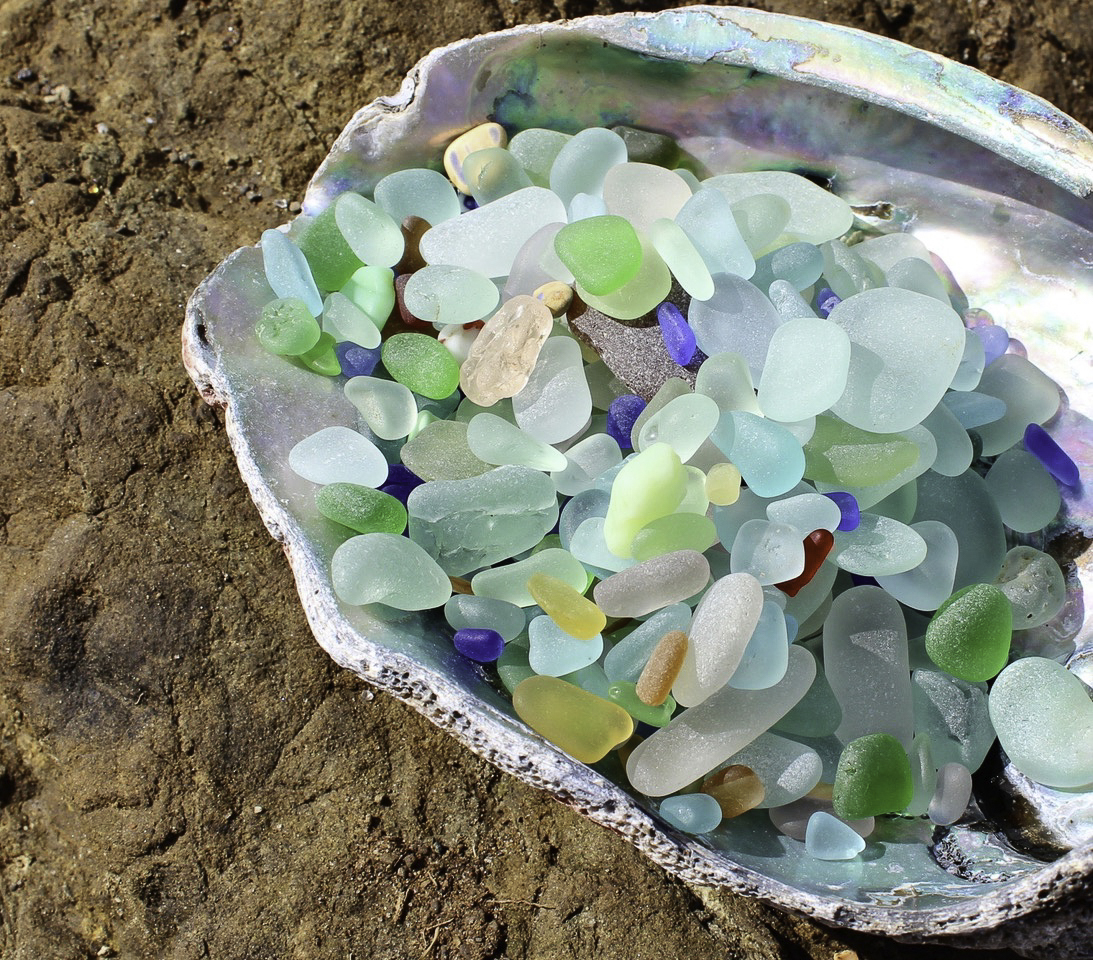
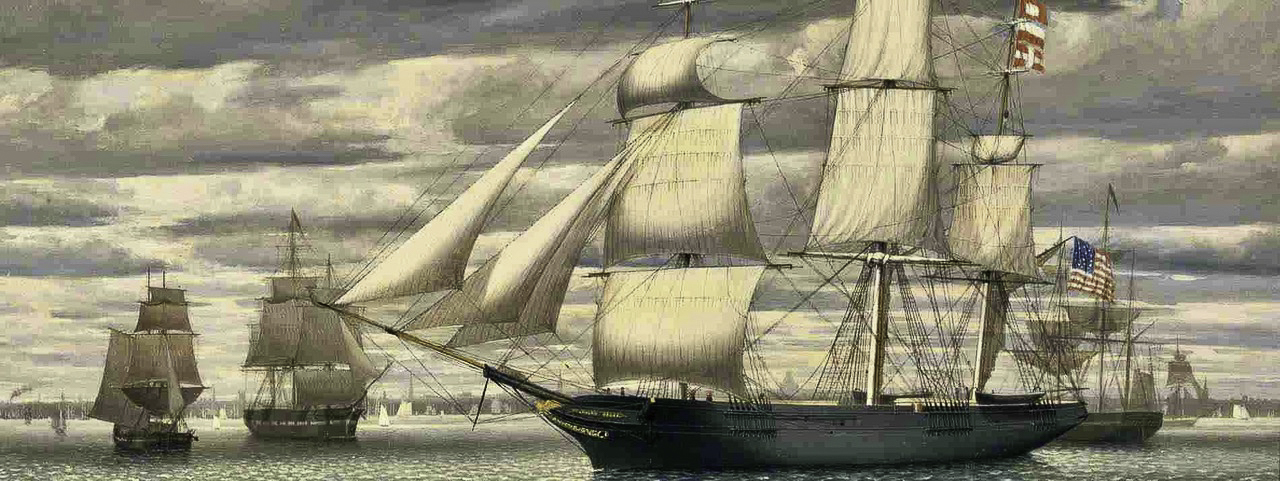
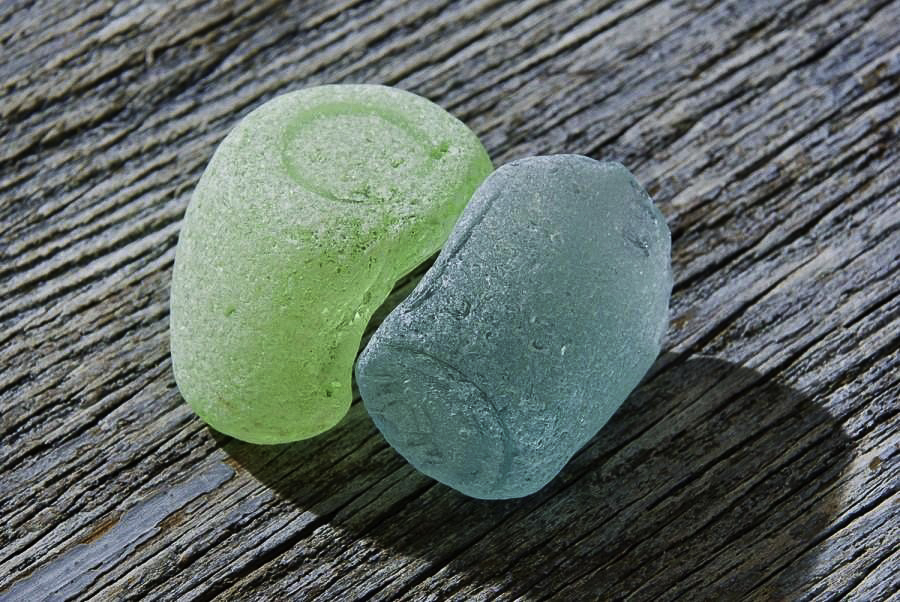
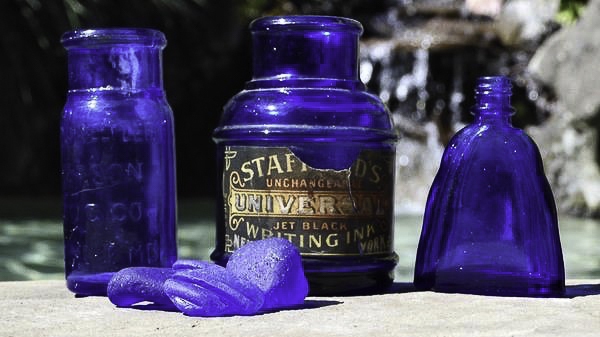
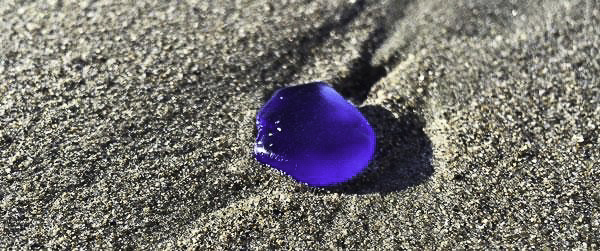
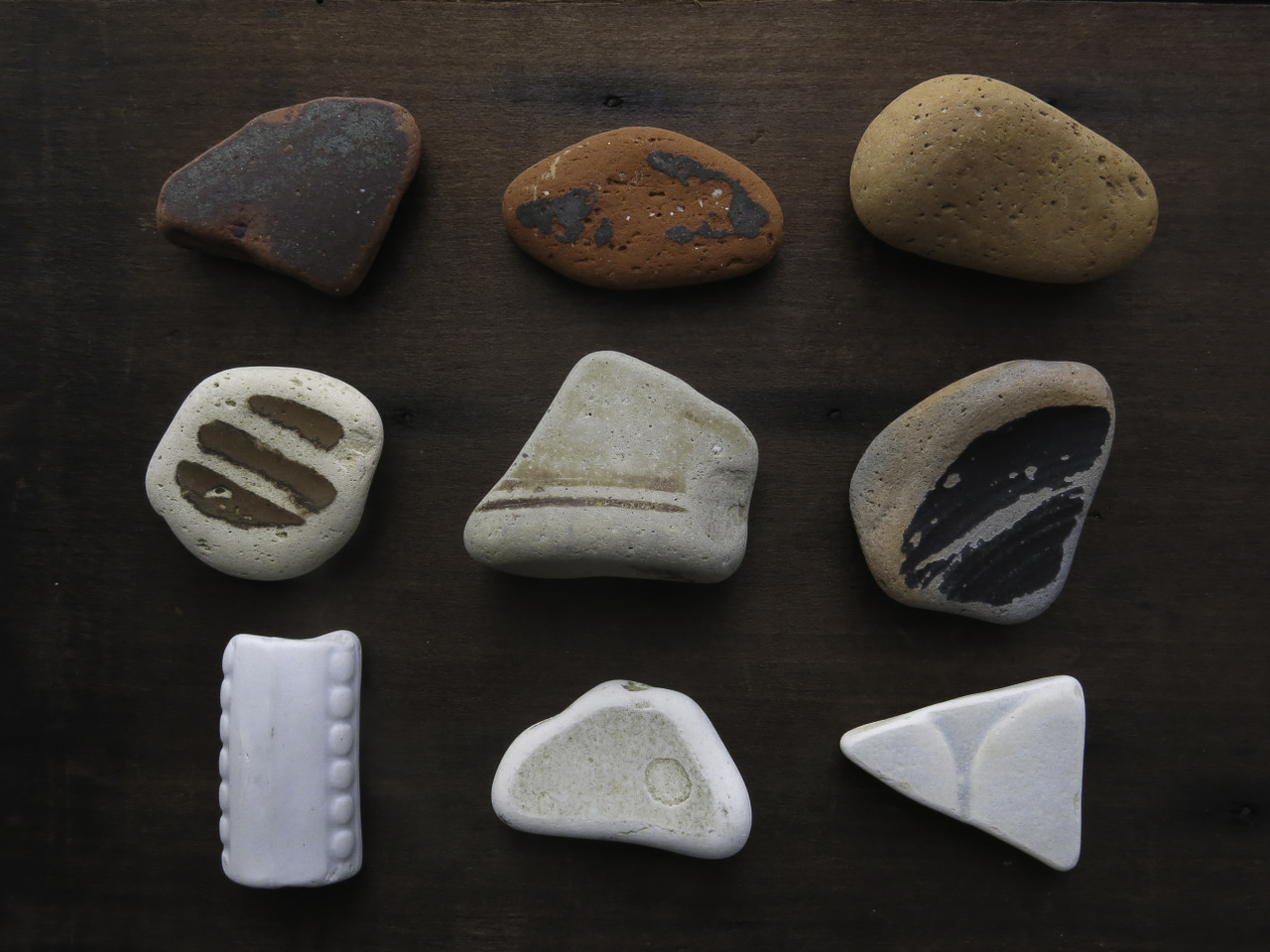
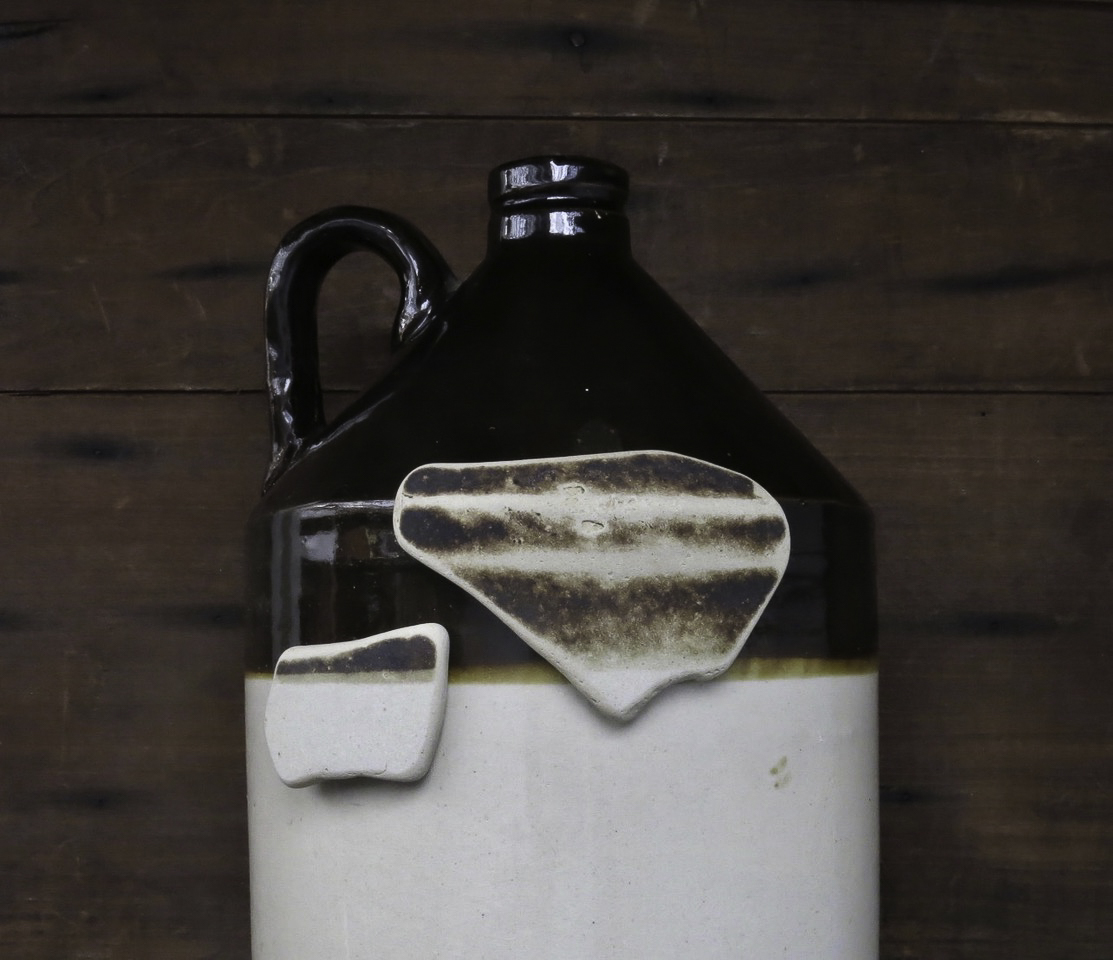
our world population sure knows how to destroy the enviroment including plastic grocery bags.
Aah, beach combing…If only we would return to glass containers.
Thanks Audrey.
So fun!
Really inspiring…
Thanks a lot
What an awesome education in nature and man made art of pottery.
Thank you Audrey.
Especially enjoyed this postcard!
We are getting a glass crusher at our recycling center, to be used in building materials; imagine if things went back to glass instead of aluminum and plastic! Even if crushed glass were dumped at sea, it would, over time, be recycled back into beach glass for future generations, and it would not create so many garbage gyres that kill so many birds and sea creatures.
Yes, how can we protect this world and appreciate what is given to us…
Thank you Audrey for raising such important issues and opening another “colorful world” on front of us.
Love your writing!